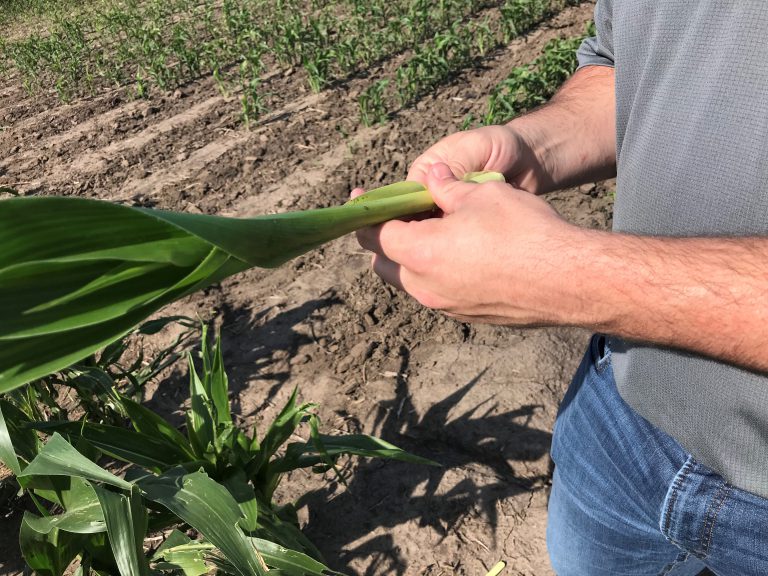Every summer, thousands of Midwestern kids as young as 13 load onto school buses early in the morning to do one of the hottest, dirtiest temporary jobs out there. They are the corn detasselers.
But this year, there’s a snag: Detasseling season is being pushed back due to a wet spring.
The season, which usually lasts about a month and starts in early July, has been pushed back nearly two weeks. In addition to flooding along the Missouri and Mississippi rivers, rainfall across the region has been above average.
Tyson Buresh co-owns Buresh Detasseling in Nebraska, and he said he’s concerned he won’t have workers for the end of the season. That’s because he and other detasseling companies will start to lose their labor force to pesky academics, forcing crews to go to a weekend-only schedule or count on kids from schools that start a little later in August.
“One contractor already asked me if I’m gonna have kids in the middle of August, which would be the latest dates we’ve went in the last 40 years,” Buresh said.
The good news? Not all corn has to be detasseled. It’s reserved for seed corn, which becomes next year’s commercial crop. In Nebraska, that’s about 150,000 acres.
Nebraska Gov. Pete Ricketts estimates there are about 7,000 kids who detassle each year. Makylee Ailes will be working for her dad’s detasseling company for the fourth time this summer.
“It’s not terrible,” Ailes said. “It’s not the worst thing I’ve ever done. But it definitely takes a toll on you by the end of the season. It’s a long season.”
Why detassle?

Detasslers spend the day going row by row through corn fields, pulling the tassels from the tops of corn plants, discarding them in the dirt. The plants can grow far above the heads of these young workers.
Darin Doerr is production leader for seed company Corteva Agriscience, and worked as a detasseler growing up.
“The tassel is the male portion of the plant and that has the pollen in it, so when it drops the pollen it falls on the female portion of the plant, which is the silk,” Doerr said. “So as one pollen hits every single one of those silks, and then it travels down the silk, and that’s what makes that kernel.”
Seed corn fields are planted with two breeds of corn, separated by rows. Removing the tassels from one breed means it cannot self-pollinate, ensuring a hybrid seed.
Aaron Saeugling, another detasseling veteran turned extension field agronomist for Iowa State University, said a cutter removes about 90% of corn tassels.
“It’s an actual machine with a blade, and so it cuts the top portion of the plant off exposing the tassel, so it’s much easier to go in with a puller,” he said. “They bring this machine in and it tries to grab the tassel and pull it from the plant.”
Twenty or 30 years ago, there wasn’t machinery to do the first 90% of detasseling, so teens did all the work. But even 90% isn’t good enough for seed companies. Kids help them get to near 100%.
In return, detasselers make good money. One detasseling company owner estimated the average 100 hours of work in a season comes out to $1,500 for 100 hours of work in a season. Beginners make less, usually minimum wage.
Makylee’s dad, Brent Ailes, is a high school principal and owner of Ailes Detasseling. His pitch to kids is they can make a couple thousand bucks in just a few weeks of work.
“And then the flip side is, I may work at Dairy Queen 20 hours here, ten hours this week, five hours this week all summer long, but I don’t even have total lump sum that I could earn in detasseling which is kind of a compact two- to three-week season,” Brent Ailes said.

He also says detasseling is part of Nebraska’s foundation in farming.
“Nebraska is an agricultural state, so that’s kind of our backbone, which means we’ve got a lot of kids that are willing, and families that know it’s a good job, a good situation to teach work ethic,” he said. “…there’s thousands of kids, literally right here in Lincoln, that are hopping on crews and working this kind of business here in the summertime.”
For kids like Makylee Ailes, hard work is made a little easier by having friends out in the field, too.
“It definitely makes it more enjoyable when you have friends out there, cause then you’re not just all by yourself walking down the corn field,” she said.
Detasseling may be hotter than scooping ice cream and dirtier than checking groceries, but teens across Nebraska will load into school buses and drive out into the countryside to make some extra money this month, because wet spring or not, the corn keeps growing.
Allison Mollenkamp is a reporter with Harvest partner NET News in Lincoln, Nebraska. Follow her on Twitter: @allisonmollenk1

